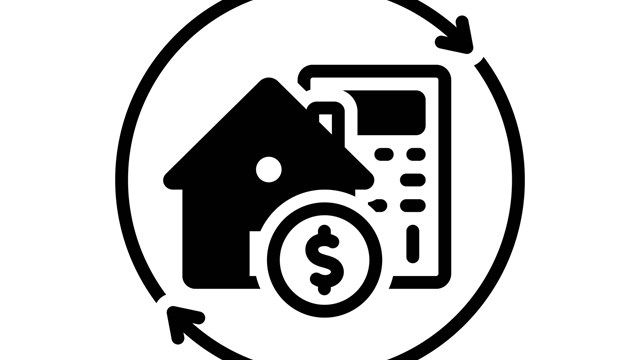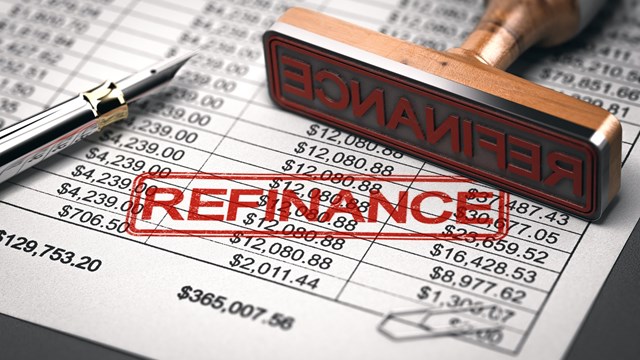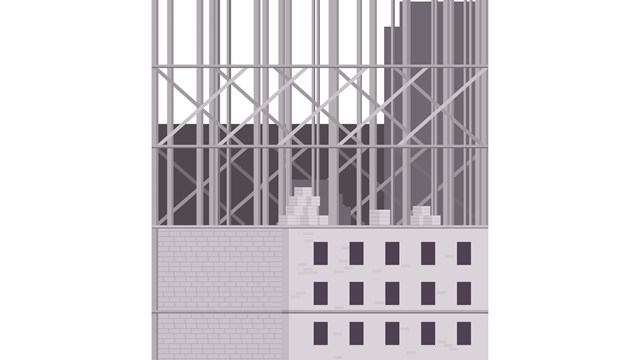Bear Stearns in Danger of Collapse… Dow Falls 400 in One Day… Big Three Automakers Seek Emergency Aid… Citigroup Shares Tumble Below $5 a Share… Dow drops below $8,000… Federal Regulators Shut Down Two California Thrifts… More Consumers Switch To Buying With Cash…
For more than a year, we’ve been hearing daily updates on the deepening economic morass, first starting with the subprime mortgage crisis, then spreading to the banking industry, then to the economy in general. Today, more and more people are cutting back on expenses, shopping less, and are fearful of losing their savings and their jobs.
The Beginning of the Crisis
According to Peter Gomori, professor of finance at St. Francis College in Brooklyn, most people in the know trace the beginning of the crisis to the summer of 2007, when there was what he calls a “dramatic stall” in the Dow Jones Average.
“I think that the Bear Stearns collapse caught many of us by surprise,” Gomori says. “The securities related to the real estate industry began not to perform sometime in 2007, when interest rates had risen and they had to adjust some of these adjustable types of mortgages. After [that], you began to see patterns of non-payment.”
Mona Shyman, vice president of the Federation of New York Housing Cooperatives and Condominiums (FNYHC), says the first sign she saw was in February 2008, “When people with good credit ratings who were going for mortgages were being asked more difficult questions.
“One person had cosigned with a grandson who had taken out a student loan that already had been paid off. The applicant asked the lender how long it would take to approve, and the lender said it would be a 24-hour turnaround time. It eventually took over a month—they kept using delaying tactics,” she said.
In New Jersey, says David Shahrabani, vice president of Popular Association Banking in Montclair, “Our area of lending to community associations first showed an effect after Labor Day 2008 as credit tightened, especially in short-term rates. Many associations in [October and November] were delaying projects that were scheduled in the last quarter of 2008 until the first two quarters of 2009.”
Causes
Of course, there are quite a few interpretations of what exactly caused the mortgage/economic crisis, and what made it so severe in our region.
For example, Karen Sackstein, a CPA based in Fair Lawn, New Jersey says, “the lenient borrowing terms and low interest rates over the past several years led homeowners into a false sense of security. Previous lender restrictions were lifted, and people who previously would have never qualified began taking on mortgage debt,” she said.
“Many of these people bought their homes with little or no money down and took on variable rate mortgages,” she says. “When the rates began to rise, they could not afford the increased payments.”
Speaking from New York, Stephen Beer, CPA, of the accounting firm of Czarnowski & Beer LLP says, “Securitization of mortgages made banks mortgage servicers, as opposed to just being mortgage holders. Fee income replaced interest income, so the focus was on the number of closings, not the credit-worthiness [of the borrowers].”
Gomori, while agreeing with some of these same arguments, adds that because so many investors in general came from outside the U.S., and so much foreign money was involved in many sectors of the economy, there was a sort of “overexuberance” in the market. This meant that “what should have been corrected sooner was delayed.”
New York vs. New Jersey
Has there been any difference in the way the crisis has played out in New York vs. New Jersey? Beer says that there has been a drop-off in sales in both markets, but that the situation is more acute in New Jersey. “New Jersey is plagued with many more foreclosures,” he says.
Still, there are sections of New York City—mainly in heavily minority and lower-middle-class neighborhoods characterized by older one- and two-family houses—where there have been foreclosures on almost every street. Throughout the country as a whole, “foreclosure bus tours” are shamelessly advertised, giving a break to some buyers at the expense of others.
“We live in Brooklyn,” says Gomori, “and we watch condos being built all over the place. Now, quite a few are in limbo because they can’t get financing.” Just as this article was being written in November 2008, the luxury Brooklyn condo development known as One Brooklyn Bridge Park, which remained two-thirds unsold after 17 months, reduced prices on about 50 apartments, according to Bloomberg News Service. And some new buildings have changed from condo developments to rentals out of desperation.
Day-to-Day Operations
We’ve seen how the banking and mortgage crisis has affected the market. But how has it affected day-to-day operations at residential buildings?
“The past few years, there has generally not been an issue with unit owners paying on time. That has changed. Certain unit owners have not been able to make their payments,” says Beer. Also, he adds that, “many buildings obtain cash flow for operations from transfer or administrative fees linked to closings. Without sales, there are no fees. So along with high energy costs earlier this year, buildings are losing revenue they had expected when they drafted their 2008 budgets.”
Our area is particularly vulnerable in another way. In Northern New Jersey and metro New York, points out Shahrabani, many shareholders are people who work in banking or financial services. With all the layoffs in these sectors, it could lead to more delinquencies in maintenance fees.
When an association files a lien against a delinquent unit owner, it still creates problems. This is because, Sackstein explains, the association isn’t the only lien-holder on the property—the bank also holds a lien. And when the bank is paid, “there is often not enough left to satisfy the association debt.”
As far as co-op and condo sales are concerned, the entire crisis could have another indirect result. Shyman explains that “More and more buyers are putting into their contracts that the closing of their new apartment is contingent on a sale of their old apartment or house. This causes a domino effect—the buyer’s willing to sell his apartment to come into your apartment, and you’re putting the same thing into play in the next place you buy.”
Some unit owners who want to move to another co-op or condo apartment are considering subletting instead of selling the old apartment. Subletting, however, is not allowed under many boards’ or associations’ rules—and even if it is, there’s no guarantee it will cover the carrying charges on the unit.
Yet another “domino effect” indirect result of the crisis, says Shahrabani, is the likelihood that “Associations may have more of a challenge funding their reserve accounts. The reserve account is funded with guidance from a reserve study, which tells the association the life span of common elements, enabling them to save properly to pay for the physical asset replacements.”
Dealing with the Crisis
In many cases, unit owners are seeing their boards and management postpone maintenance and repairs, or in some cases cancel them outright. This is what happened to many formerly upscale apartment buildings in city neighborhoods during the previous economic crisis of the 1930s. Hallways, doorways and outdoor window frames went without painting, garden areas weren’t cared for (or were even paved over), doormen were laid off, and awnings were removed rather than repaired. That doesn’t mean there aren’t valid strategies for saving money for your building communities in these difficult economic times—even though experts may disagree on just what these strategies are.
As we’ve said before, common elements must be maintained to maintain the property’s integrity and its value. But according to the pros, there’s still room for common-sense budgeting, tighter oversight of contractors’ activities, going after delinquent owners more aggressively, postponing non-essential items—and more.
One window for saving money that Gomori sees is the lower cost of oil. “There is an opportunity to examine ways to save on energy while the cost of energy is low. We have some leeway right now,” he said. Shyman also addresses the energy issue, but says, “The only way I think a building could really save money is, in a master-metered building, to get the residents to switch to submetering. Then, you’ll find a great difference. When people have submetering and go away to Florida for the winter, they will pull the plugs out on their heavy appliances [television, computer], because they are eating up electricity even if you’re not using them.”
Still, the cost of installing the submetering must be passed on to the unit owner or shareholder. Beer, the accountant, gives some additional financial strategies for cost cutting. “We are recommending to not budget any transfer or administrative fees from sales for 2009. If things improve, a dividend or abatement can be given to owners next year. Energy audits and utilizing the buying power of their managing agent helps. Search for new sources of revenue, especially repairs done by building employees that can be charged back to unit owners.”
If your board or association needs more advice, there are many resources to help. Among the best resources, of course, are your managing agent or property manager, your accountant, financial consultant and attorney. Of course, there are also organizations like the Federation of New York Housing Cooperatives and Condominiums, the Council of New York Cooperatives and Condominiums and (CNYC) and the Community Associations Institute of New Jersey (CAI-NJ).
Raanan Geberer is a freelance writer and editor living in New York City.










Leave a Comment